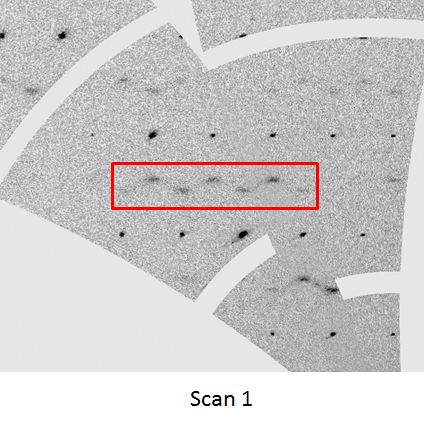Chemical Communications 2018, 54, 9849 – 9852 [doi:10.1039/C8CC05430D]
For the collidine analogues of Barluenga’s Reagent (IPy2BF4) reported, a flat cation is necessary for the generation of a modulated phase, in keeping with the “Ratchet Model” theory [Kim et al., Crystal Growth & Design, 2014, 14, 6294]. Attempts to study “diffuse modulation” in Br(Coll)2ClO4 have shown that these non-Bragg features disappear very rapidly on exposure to synchrotron radiation, an effect thought to be caused by the radiation damage disrupting the lattice vibrations that cause the modulation.
- Publisher’s copy:Â Royal Society of Chemistry
- Oxford University Research Archive (ORA)

